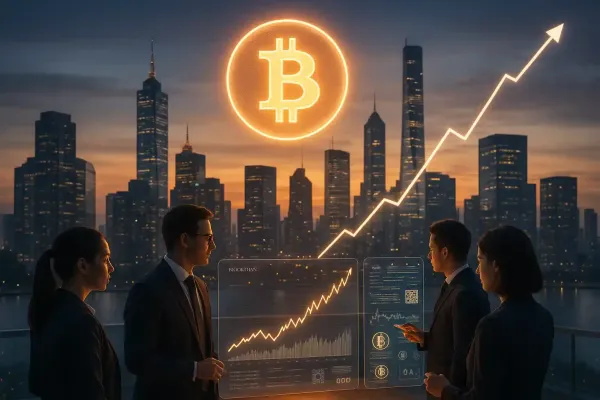Bitcoin on the Brink of Scarcity: Why Demand Outstrips Supply and What It Means for the Future

On May 13, 2025, Coinbase’s Head of Institutional Strategy made a statement that sent shockwaves through the crypto market: current demand for Bitcoin far exceeds miners’ ability to produce new coins. With a hard cap of 21 million Bitcoins, this trend underscores the asset's growing scarcity. Driven by the recent halving, accelerating institutional adoption, and significant accumulation by ETFs, Bitcoin is now at a pivotal moment. This article explores the reasons behind the supply-demand imbalance, the supporting data, its impact on the market, and what the future may hold.
Background: Bitcoin’s Engineered Scarcity
Bitcoin, created by the pseudonymous Satoshi Nakamoto, is hard-capped at 21 million coins—a stark contrast to fiat currencies that can be printed without limit. By 2023, over 19 million Bitcoins had already been mined, leaving fewer than 2 million to be issued until approximately the year 2140.
However, estimates suggest that 3–4 million Bitcoins are lost due to forgotten or inaccessible private keys, making the effective circulating supply even smaller. This economic principle—fixed supply meeting rising demand—is driving Bitcoin’s market dynamics to new highs.
Coinbase's May 13, 2025, statement emphasized that miners can no longer produce Bitcoin fast enough to meet global demand. This is being intensified by three core drivers: the Bitcoin halving, institutional adoption, and large-scale accumulation by major entities.
Key Drivers of the Supply-Demand Imbalance
1. Bitcoin Halving: Slashing New Supply
The Bitcoin halving—an event that occurs every four years or after 210,000 blocks—reduces mining rewards by 50%. The most recent halving in April 2024 cut the reward from 6.25 BTC to 3.125 BTC per block. With approximately 144 blocks mined daily, new supply now stands at around 450 BTC per day, or 164,250 BTC per year—less than 1% of the total circulating supply.
Historically, each halving (2012, 2016, 2020) has been followed by long-term price increases due to reduced new issuance. For example, after the 2020 halving, Bitcoin rose from $12,000 to $18,000 in a matter of months. In 2025, the scarcity effect has been even more pronounced, with prices peaking at $102,000 on January 7, 2025, before correcting to $95,432 as of May 19, 2025.
2. Institutional Adoption Surges
Institutional participation has played a critical role in increasing demand. The launch of U.S.-based Bitcoin Spot ETFs significantly impacted the market. In December 2024, ETFs acquired 51,500 BTC—nearly four times the 13,850 BTC mined that month.
As of January 2025, global ETFs hold 6.24% of Bitcoin's total supply, valued at approximately $139 billion. Corporations like MicroStrategy have accumulated 252,220 BTC, worth roughly $24 billion, reinforcing Bitcoin’s appeal as a treasury asset.
Furthermore, political support—such as the U.S. Bitcoin Act of 2025, which proposes a strategic national reserve of Bitcoin—could introduce governments as significant market players. Political figures, including Donald Trump, have pushed to make the U.S. the “crypto capital of the world,” fueling optimism.
3. Accumulation and FOMO in Retail Markets
Retail investors are also contributing to rising demand, driven by FOMO (fear of missing out), especially amid institutional involvement and price rallies. On a single day in January 2025, Bitcoin ETFs saw inflows of $978.6 million, though this later dropped to $52.4 million on January 7—demonstrating market sensitivity.
Additionally, countries like Paraguay and Pakistan are using surplus energy to mine Bitcoin, adding strain to available global supply. Meanwhile, the Stock-to-Flow (S2F) model—despite criticisms—projects Bitcoin could reach $1 million in 2025, reinforcing the scarcity narrative and attracting further investor interest.
Supporting Data: The Numbers Behind the Trend
- Daily Supply: Post-halving (April 2024), only 450 BTC are mined daily, totaling ~164,250 BTC per year.
- ETF Demand: December 2024 ETF purchases totaled 51,500 BTC—nearly 4x the amount mined.
- ETF Holdings: Global ETFs now control 6.24% of all Bitcoin (~$139B value as of January 2025).
- Bitcoin Price: Peaked at $102,000 (Jan 7, 2025); currently $95,432 (May 19, 2025).
- Forecasts: $160,000 by end-2025, $185,000 by 2026, and $350,548 by 2030 (Cryptopolitan).
- Lost Supply: Estimated 3–4 million BTC lost forever.
- Miner Dominance: Public miners like Marathon Digital control 24.6% of global rewards (as of Sept 2024).
Market and Mining Impacts
1. Price Volatility and Investor Sentiment
The scarcity-fueled price surge has driven Bitcoin to record highs. However, volatility remains a risk. Declining ETF inflows in January 2025 led to short-term corrections. Both institutional and retail investors must prepare for turbulence—even as long-term forecasts remain optimistic.
2. Miner Challenges and Technological Arms Race
Post-halving, reduced block rewards have tightened miner margins. Efficiency and innovation are now critical. Leading ASIC hardware like the Bitmain Antminer S21+ (15 J/TH) has become essential for competitiveness.
Public mining firms such as Marathon Digital and Riot Platforms are thriving due to economies of scale and access to low-cost energy. In contrast, smaller miners are struggling under rising energy prices and stricter regulations, such as Nebraska’s LB 526, which requires miners to fund infrastructure.
3. Industry Consolidation
High demand and shrinking margins are driving mergers in the mining sector. On May 13, 2025, American Bitcoin merged with Nasdaq-listed Gryphon Digital Mining—reflecting a broader trend toward consolidation and scale.
Future Implications
For Investors
Bitcoin’s increasing scarcity reinforces its role as a long-term store of value—often referred to as “digital gold.” Long-term HODLing remains a viable strategy, though volatility must be managed. Exposure via ETFs or mining stocks can offer indirect access with lower risk.
For Miners
To remain profitable, miners must innovate—investing in renewable energy, joining mining pools, or considering alternative coins like Aleo, known for energy efficiency. Sustainability and operational resilience are now essential for survival.
For the Global Market
If the U.S. Bitcoin Act passes—or if other nations pursue strategic reserves—Bitcoin’s price could skyrocket. However, regulatory risks (e.g., in Nebraska or Malaysia) and systemic threats (e.g., attacks or tech failures) remain.
Critical Analysis: Opportunities and Risks
The demand-supply imbalance underscores Bitcoin’s scarcity narrative, drawing investors and institutions. Yet, over-reliance on institutional sentiment exposes the market to policy and perception shifts.
The Stock-to-Flow model, while optimistic, ignores key risks like regulation and manipulation. Furthermore, the growing influence of public mining firms raises concerns about centralization—contradicting Bitcoin’s decentralized roots.
Conclusion
Bitcoin’s soaring demand in May 2025 reflects a convergence of its built-in scarcity and global adoption trends. The 2024 halving, aggressive ETF accumulation, and supportive policies have created a perfect environment for price appreciation—potentially reaching $160,000 by year’s end and $350,548 by 2030.
However, this evolution presents both opportunities and challenges. Investors must stay informed and diversified, while miners must innovate to survive. As Bitcoin enters a new phase as a global asset, success will depend on strategic foresight and resilience.
Sources
- Coinbase Statement – May 13, 2025 (via X posts)
- ETF & Price Data – CryptoSlate, Cointelegraph (January 2025)
- Price Forecasts – Cryptopolitan, Stock-to-Flow Model
- Mining Statistics – CoinShares, Bitmain (September 2024)
- Lost Supply Estimates – Community Analysis (2023)
This article presented by Loka Mining.
Loka is revolutionizing the Bitcoin mining ecosystem by directly connecting investors with Bitcoin miners through a decentralized mining pool and an upcoming permissionless forward hashrate marketplace protocol.
Loka enables investors to get Bitcoin at lower than market price without centralized & counter-party risks, and Bitcoin miners to access capital efficient financing and hedge their risk exposure by selling their future mining rewards.
Find out more about loka in https://lokamining.com — or access our mining pool aggregator on https://pool.lokamining.com





